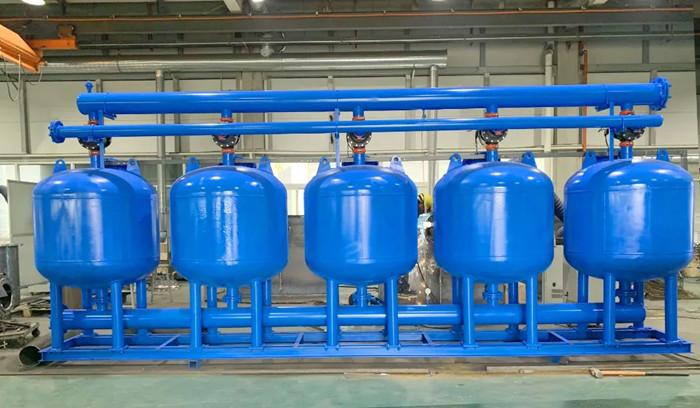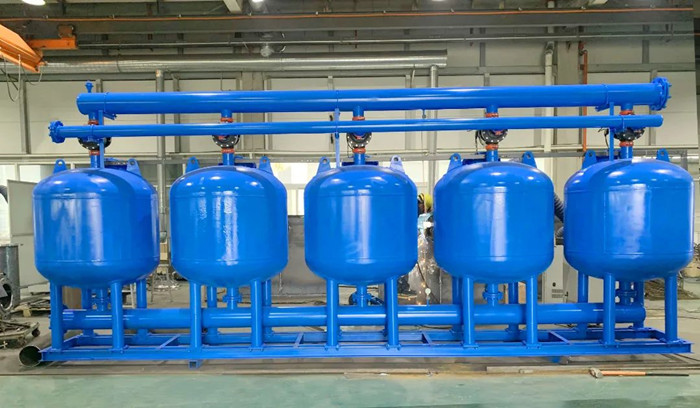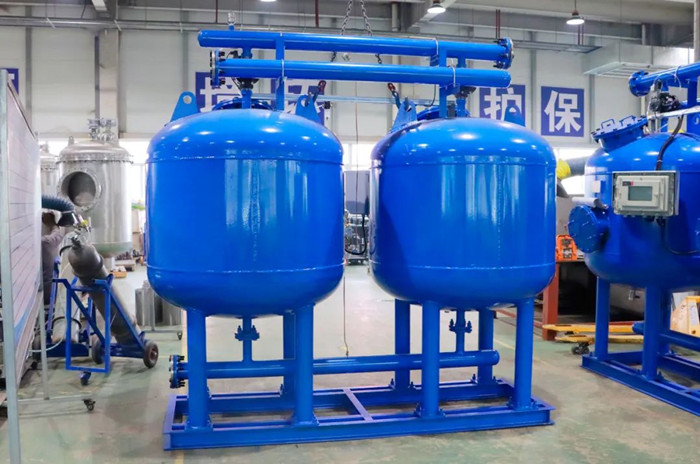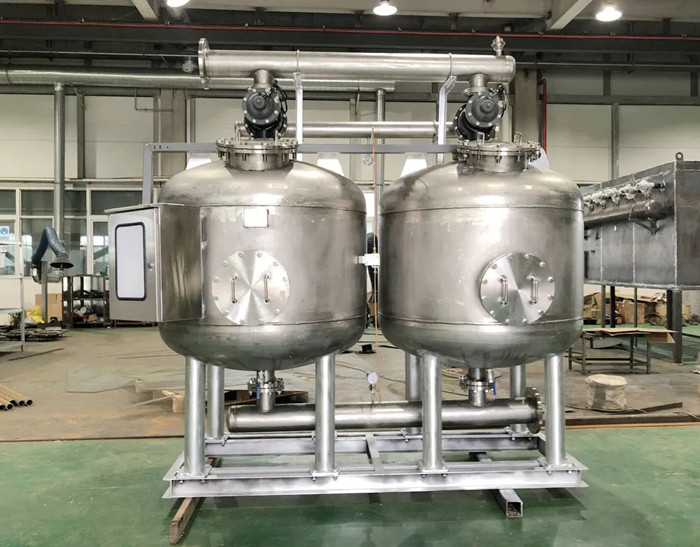2022-03-12

Lefilter has been committed to the production, R & D and manufacturing of circulating cooling water equipment for many years, providing customers with professional and feasible water treatment solutions. After years of practice, the shallow sand filter developed and produced has the outstanding characteristics of small volume, fast flow rate and uninterrupted water supply. Today, I will lead you to understand the operation precautions and maintenance knowledge of the lower shallow sand filter.

Precautions for installation and commissioning
Preparation before startup
The operator must hold the operation card and be operated by a specially assigned person.
Obstacles around the filter shall be removed in time.
For the filter after maintenance, check whether the connection and fit of each component are firm and whether the tightness is appropriate.
Operation sequence: note that the equipment is installed by bypass
Sand loading: the water inlet and outlet valves of the equipment are closed and isolated from the on-site system. Coarse and fine sand shall be loaded into the tank in turn. After loading one kind, the surface shall be paved before loading the next kind. Each tank shall be loaded in turn.
Sand washing: the initial state of the equipment is the filtration state. Only open the water inlet valve and blowdown valve of the equipment, and then manually clean the sand in each tank in turn. The clean water is qualified, and the cleaning time of each tank is about 15 minutes.
Start operation of filtration: open the inlet and outlet valve of the filter, and the operation and backwashing pressure of the filter are adjusted by the outlet valve. During backwashing, the outlet pressure should be kept above 0.25MPa to achieve the best cleaning effect.
Backwashing operation: when the filter operates for a certain time, the filter residue will block the gap, resulting in differential pressure in the inlet and outlet pipes of the filter. The value of differential pressure can be observed from the inlet and outlet pressure gauges. When the differential pressure reaches the set 0.1MPa or reaches the set filtration time 4h, automatic backwashing will be carried out.


In order to ensure the best cleaning effect of the filter, the outlet pressure of the filter shall be maintained above 0.25 MPa. If the outlet pressure fails to meet the requirements, a regulating valve shall be installed on the outlet main pipe of the filter to ensure that the pressure requirements (0.25MPa) are met during cleaning.
Equipment maintenance
Check for water leakage. Whether there is water leakage at all sealing parts and auxiliary valves of the equipment. If there is water leakage, find out the location and cause of the water leakage point and stop the leakage in time.
Check for vibration. Whether there is abnormal vibration when opening and closing the valve. If there is vibration, find out the cause and take solutions in time
NO | Inspection Item | Inspection method and others |
1 | Packing inspection | Replace all filter materials and quartz sand if they are seriously polluted |
2 | Inspection of internal fasteners | Check the careless fasteners of bolts and nuts in the filter. If they are loose, retighten them |
3 | Internal cleaning | After washing with water, clean the inside of the filter with waste cloth |
4 | Refill the filter material | Refill the filter material according to the specified quantity and requirements. Measure whether the amount of filler reaches the required amount and supplement the insufficient part (generally, if quartz sand and activated carbon are mixed, the filter material needs to be replaced once a year, depending on the water quality) |
5 | Manhole gasket inspection | Check whether the manhole sealing gasket is deformed. If it is deformed, replace it. Immerse the bolts and nuts in the cleaning oil and thoroughly remove the rust; Apply grease to bolts and nuts when installing manhole cover |
Inspection time | Inspection Item | Judgment criteria | Maintenance and repair |
Before filling | Hydrostatic test | There is no water leakage at manhole and inlet and outlet flanges | If there is water leakage, tighten the fasteners of the component after pressure relief |
Verification of installation status of internal parts | a. The top water distribution device is installed horizontally without inclination | a. Inclined installation is prone to bias current and must be corrected | |
b. The filler on the water collecting device shall be paved neatly, and there shall be no leakage of quartz sand | b. Pave the quartz sand to cover the water collecting device | ||
C. The fasteners of all parts shall not be loose or missing | C. If the fasteners are loose, they shall be tightened and tightened again, and the missing parts shall be repaired in time | ||
Whether the interior is cleaned | No foreign matter | Clean thoroughly | |
Water filling or hydrostatic test |
Opening and closing inspection of valve | Each valve operates normally according to the procedures listed in the operation procedure table, with flexible rotation and no abnormal sound | If the action is abnormal, check the cause and correct it; Lubricating oil can be added if the rotation is not flexible |
Leakage inspection of valve | The end cover, flange, gasket and other parts of the valve shall be free of leakage | If there is leakage, tighten the fasteners at this position |